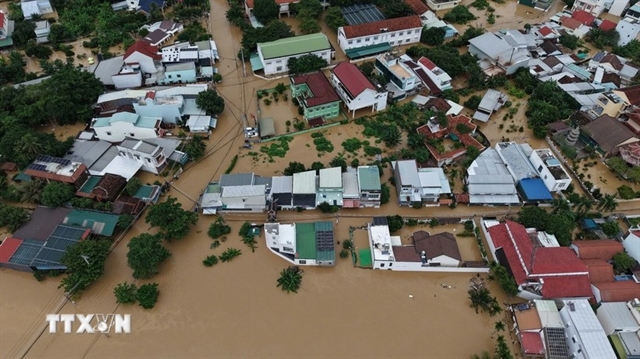 Economy
Economy


|
| Việt Nam’s real GDP is expected to grow strongly next year thanks to a tourism rebound. Photo hanoimoi.vn |
HÀ NỘI — Việt Nam’s real GDP would grow by 2.6 per cent in 2020 and hit an 8.2 per cent rebound next year, Fitch Solutions has forecast.
According to a report released on Thursday, the UK-based financial information services provider said its forecast continued to reflect its view for Việt Nam’s economic recovery to gain steam in the final quarter and into 2021, supported by manufacturing, construction and services.
“Accordingly, we forecast real GDP to stage a strong rebound to 8.2 per cent in 2021, assuming freer international movement of persons, which would support a tourism rebound and better containment success externally for most of the year, especially in major export destinations for Việt Nam such as the US and Europe, which would support external demand,” it said.
“We expect growth of the industrial and construction sectors, which accounts for about 35 per cent of GDP combined, to only strengthen slightly in the final quarter.”
According to the General Statistics Office, growth in the industrial sector increased to 2.3 per cent year-on-year (y-o-y) in Q3 2020, from 1.1 per cent y-o-y in Q2 2020, driven by a slight pick-up in manufacturing (17 per cent of GDP) growth to 3.9 per cent y-o-y from 3.4 per cent y-o-y, and electricity, gas and water generation (4.8 per cent of GDP) growth to 4.0 per cent y-o-y from -0.1 per cent y-o-y. The extractive sub-sector extended its contraction to 5.9 per cent y-o-y in Q3 from 5.8 per cent y-o-y amid a low oil price environment.
Fitch expects manufacturing growth to strengthen in the final quarter and into 2021 although a weak external economic environment could cap gains in this segment.
This is because the Vietnamese manufacturing sector is already extremely dependent on trade, with exports at almost 110 per cent of GDP. While China, Việt Nam’s second largest export destination, appears to be showing promising signs of a V-shaped economic recovery following effective containment of its domestic COCID-19 outbreak, other large exports destinations such as the US, Japan and the Eurozone countries are set to face economic contractions in 2020 with the US and major European countries in particular facing a resurgence of infections domestically, which clouds Việt Nam’s export growth outlook.
As for the industrial and construction sectors, which account for about 35 per cent of GDP combined, Fitch expects them to only strengthen slightly in the final quarter. Growth in the construction sector (5.6 per cent of GDP) strengthened to 5.7 per cent y-o-y in Q3 2020 from 4.7 per cent in Q2 2020.
“We believe that public efforts such as the change in financing methods for three sub-projects under the Eastern North-South expressway project from public-private partnerships (PPP) to public investments has accelerated the progress of these sub-projects.”
Fitch forecast the recovery in services (42 per cent of GDP) growth to continue in the final quarter and into 2021. The services sector as a whole grew by 2.8 per cent y-o-y in Q3 2020, rebounding from -1.9 per cent y-o-y in Q2 2020.
This was mainly due to the lifting of domestic movement and travel restrictions which allowed for some normalisation of economic activity and domestic tourism to support sub-sectors such as retail, hotels and restaurants, transport and warehousing, with financial services growth rising in line with the general economic recovery.
Despite Fitch’s positivity on the services sector’s recovery prospects, it continued to flag that a strong recovery to trend growth of about 7 per cent for the services sector would still be some way off with a shortage of international tourist arrivals. This was as long as international travel remained subject to heavy restrictions as well as Việt Nam’s suspension on the entry of international tourists since March 22 remained in effect to limit the spread of COVID-19.
Finally, Fitch said growth in the ‘agriculture, forestry and fisheries sector (14 per cent of GDP) would remain fairly low and stable so long as cultivation did not experience any major supply shocks from bad weather, and thus should not deliver a material change to headline growth. — VNS




